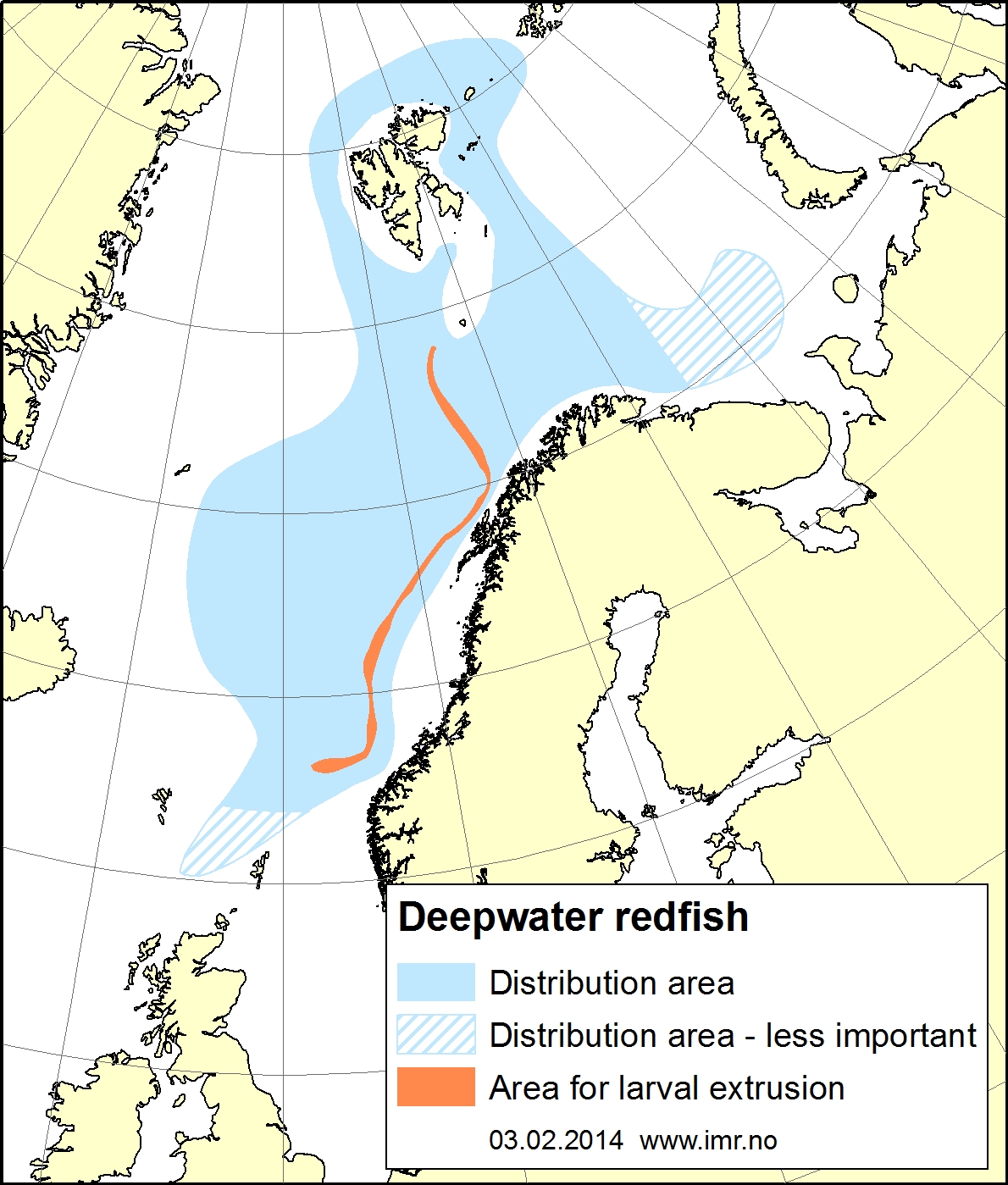Beaked redfish in the Barents and Norwegian Seas

Beaked redfish caught 240 nm west of Sørøya
Photo: Leif Nøttestad / Institute of Marine ResearchBeaked redfish does not enter the North Sea proper, but is distributed along its northern edge at the continental shelf and in the Norwegian Sea, at 400–600 m from Shetland to Andøya and also in shallower waters north of that island. Few of the fish in these areas are smaller than 28–30 cm. Nursery areas are found in the Barents Sea and around Svalbard, including north of Spitsbergen.
Beaked redfish release living larvae at around 4–6 mm length along the shelf break (Eggakanten) from Shetland northwards to the fishing grounds off Tromsø (Tromsøflaket). Females throughout the Barents Sea exhibit “spawning migrations” to these areas.
Young beaked redfish feed primarily on zooplankton like Copepods, krill and amphipods. Thereafter the diet shifts to a greater emphasis on krill and later fish. With good recruitment, redfish under 25 cm form up to 10 % of North East Arctic cod’s diet. Another important predator on small beaked redfish is greenland halibut. Larvae and very small juveniles can also be found in herring stomachs.
Until they are sexually mature, growth rates of beaked redfish are similar to those of golden redfish. Up to now there were no noticeable effects of climate change on age at first maturity, productivity or distribution. However, it may have played a role in the large-scale migration into the central Norwegian Sea observed since 2003.
Published: 18.12.2018 Updated: 06.09.2023


